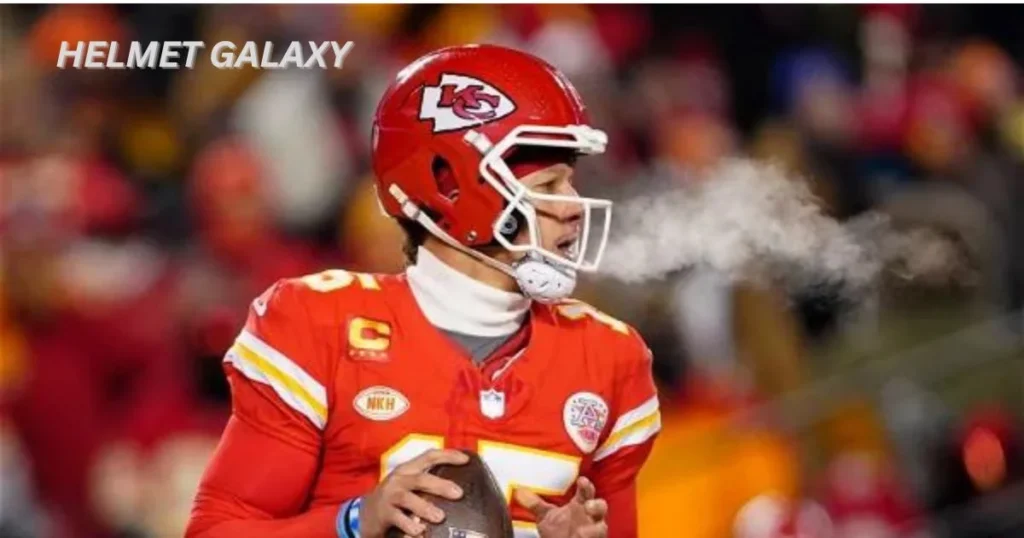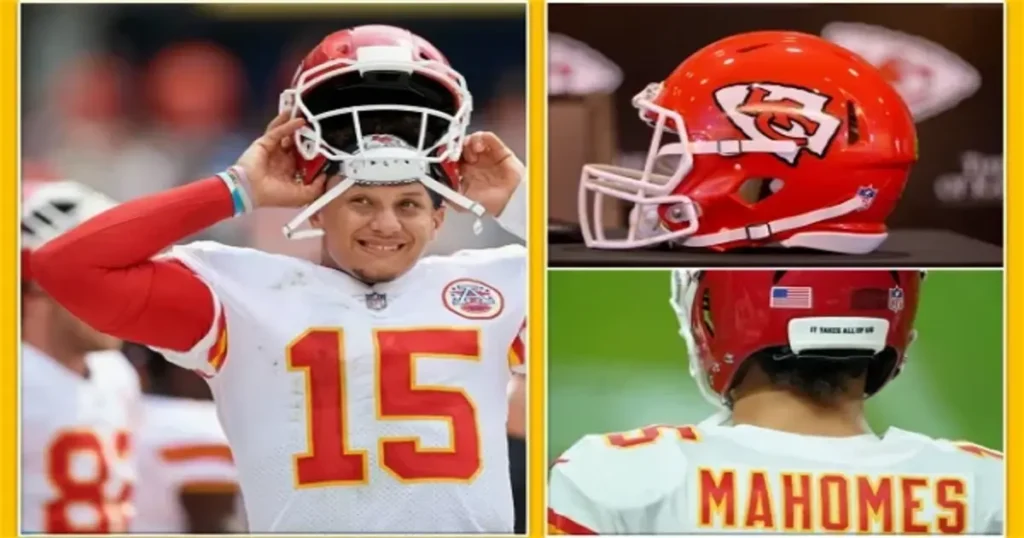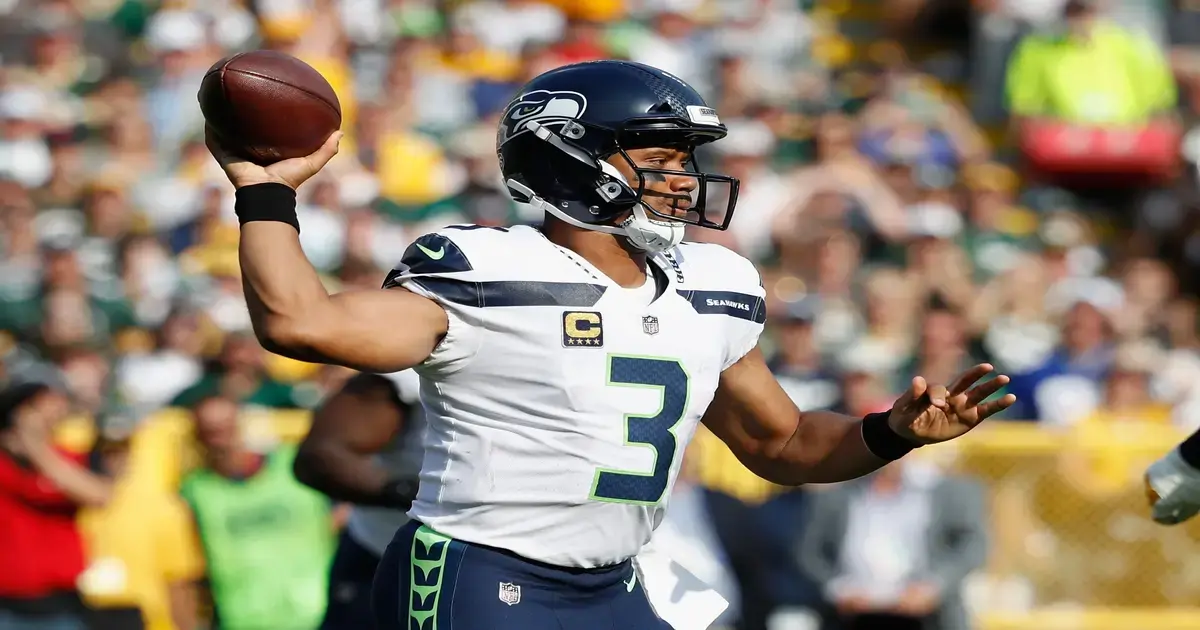Football helmets are an essential piece of protective gear for players in the sport of football. The helmet helps absorb impact to the head and protect the player from concussions and other head injuries. But how much does this critical piece of equipment actually weigh? The weight of a football helmet can vary depending on the type, size, and features.
Typical Weight of a Football Helmet
Most adult football helmets weigh between 4 and 6 pounds. Here’s a breakdown of the typical weight ranges:
- Youth football helmets – 2 to 4 pounds
- High school football helmets – 4 to 5 pounds
- College football helmets – 5 to 6 pounds
- Professional football helmets – 5 to 6 pounds
However, some specialty helmets may weigh slightly more or less than these ranges. The size of the helmet, additional protective features, and materials used can all impact the overall weight. But for most levels of play, the helmet weight falls somewhere between 4 and 6 pounds.
What Impacts the Weight of a Football Helmet?

Several key factors influence the weight of a football helmet. These include:
Helmet Size
Larger helmet sizes weigh more than smaller sizes. Adult helmets are sized from small to extra-large and generally range from 1.75 to 2.25 pounds in weight per size. The smallest youth helmets designed for 5 to 8 year olds may only weigh about 2 pounds. While extra-large professional models tip the scales at around 6 pounds.
Materials Used
The materials used in the helmet’s construction also affect its weight. Traditional football helmets incorporate a thick plastic shell covering foam padding. Newer designs may utilize lighter weight materials like carbon fiber and titanium to help reduce overall weight while still providing protection.
Additional Safety Features
As helmet technology has improved, new safety features have been added. For example, some helmets now incorporate extra layers of padding and protection to help absorb force. Additional thickness and materials in the helmet shell and interior padding will increase the weight.
Other features like air pockets and segmented padding may help reduce weight while offering more protection. So helmets with more safety features do not universally weigh more than their simpler counterparts.
Position of Player
The position a player is in impacts the helmet type and features used. For example, some quarterbacks opt for lighter helmets to help increase speed and agility. Linemen tend to use heavier helmets with enhanced features to protect against frontal impact from clashes at the line of scrimmage.
The Parts of a Football Helmet

Now that we’ve looked at helmet weights overall, let’s break down the parts of a helmet and how they contribute to the total weight.
Shell
This is the hard outer covering that provides the first layer of protection. Traditional shells are made from thick polycarbonate plastic. Newer materials like carbon fiber are very strong but lighter in weight. The shell accounts for approximately 2 pounds of a helmet’s weight.
Facemask
The facemask is made from metal materials like carbon steel or titanium. It bolts to the front of the shell and accounts for about half a pound of weight.
Chin Strap
Secured with nylon or polyester, the chin straps weigh just a few ounces.
Helmet Liner System
This includes interior padding and suspension. The materials used dictate the weight, but a typical liner system adds around 1.5 to 2.5 pounds of weight.
Jaw Pads
Optional jaw pads weigh approximately 3 ounces each.
Visor
Tinted polycarbonate visors are optional accessories ranging from 1 to 3 ounces in weight depending on size.
How Helmet Weight Has Changed Over Time

Looking back through the decades, football helmet weight has dramatically changed as designs and materials have evolved.
Leather Helmets (1900s to 1930s)
Early football helmets were made from thin leather and offered minimal protection. These leather helmets weighed less than a pound. While better than no protection, the leather did little to absorb heavy impacts.
Early Plastic Shells (1940s to 1950s)
The first plastic shells emerged in the 1940s. These early plastic helmets were slightly heavier at up to 2 pounds, but were still quite minimalist in design with little interior padding.
Single Bar Facemasks (1950s to 1970s)
The addition of single bar facemasks added a bit more weight to helmets during this era. Helmet weights increased to around 3 pounds with basic plastic shells and single bar facemasks.
Advanced Plastic Shells (1970s to 1980s)
Helmet manufacturers began experimenting with more advanced plastic shell designs. Interior padding and suspension systems were added to better absorb force. Weights rose to 4 pounds or more with these design changes.
Advanced Materials and Features (1990s to Today)
Modern football helmets have introduced new materials and features. For example, polycarbonate plastic shells were thickened and enhanced. Interior padding increased and moldable foam became more common. Additional safety features also added weight. Top of the line helmets today range from 4 to 6+ pounds.
While helmets have gotten heavier over the decades to improve protection, manufacturers also balance this with new materials to try limiting unnecessary additional weight. The focus is creating the safest helmet at an optimal weight for performance.
How Helmet Fit and Position Impact Weight Needs

When considering helmet weight, it’s important to evaluate proper fit and the player’s position.
A helmet can’t properly protect the player if it is too large and shifts around on the head. The ideal helmet fits snugly and shouldn’t move more than 1/2 inch in any direction when shaking the head. Players with smaller heads may find a lighter helmet stays more securely in place.
The player’s position is also key. Speed positions like quarterbacks and wide receivers may prefer a lighter helmet. Heavier helmets with enhanced protective features are ideal for linemen and linebackers who receive repeated frontal blows.
The most important factor is choosing the proper helmet weight for the individual player’s head size, position, style of play, and level of competition. A certified athletic trainer can help determine the ideal weight range.
Chart Showing Helmet Weights by Type
This chart provides a quick summary of typical weight ranges by helmet type:
|Helmet Type|Average Weight Range| |-|-|-|
|Youth Football Helmet | 2 – 4 pounds| |High School Football Helmet|4 – 5 pounds| |College Football Helmet|5 – 6 pounds|
|Professional Football Helmet|5 – 6 pounds| |Quarterback Helmet|4 – 5 pounds| |Lineman Helmet|5 – 6+ pounds|
How Helmet Weight Compares to a Player’s Overall Equipment Weight
Looking beyond just the helmet itself, the total weight a football player carries with their full set of equipment is:
- Helmet – Approximately 4 to 6 pounds
- Shoulder Pads – 4 to 8 pounds
- Thigh/Knee/Hip Pads – 5 to 7 pounds total
- Cleats – 2 to 4 pounds
- Additional Accessories – Neck rolls, arm pads, gloves, braces, etc. may add 1 to 3 pounds
All this equipment together means that football players take the field carrying:
- Skill Position Players – 15 to 25 pounds of equipment
- Linemen – 25 to 35+ pounds of equipment
So a helmet weighs a small percentage (15-25%) of the total gear weight. While important, a lighter helmet alone provides minimal overall weight savings versus other equipment positions. The helmet’s job is protection – not necessarily weight savings.
How Helmet Weight Compares Between Sports
Looking beyond just football, how does helmet weight compare across different sports?
- Football – 4 to 6 pounds
- Baseball – 2 to 3 pounds
- Lacrosse – 2 to 4 pounds
- Hockey – 1.5 to 3 pounds
- Bike – 1 to 2.5 pounds
Football helmets are heavier than other sports due to the need for maximum protection from high speed collisions. Other sports still require helmets for safety, but prioritize lightweight materials for agility and speed.
Frequently Asked Questions About Football Helmet Weight
Do heavier helmets provide more protection?
Not necessarily. Advancements in materials and design means that lighter helmets today can often provide equal or better protection compared to older, heavier models. The key factors are proper fit, construction quality, safety certifications, and utilizing the right helmet for the player’s position and size.
Is there a weight limit on football helmets?
Most leagues do not impose specific weight limits, but very heavy helmets can cause issues. Excessively heavy helmets increase neck fatigue over the course of a game and season. additionally, heavier helmets with no performance benefit can decrease player speed and mobility. The NFL for example recommends players wear the lightest helmet that still provides adequate protection.
Can heavy helmets increase risk of concussions?
Some studies have found that heavier helmets may contribute to increased risk of concussions. The additional mass places more strain on the neck muscles to support the weight, especially during hits. This can potentially contribute to more severe head movements that may lead to concussions. Lighter helmets designed to still absorb impacts may help avoid these issues.
Do lighter helmets reduce performance?
Not if the helmet still fits properly and contains adequate protective components. Manufacturers now use strong yet lightweight materials to optimize protection without unneeded extra weight. Studies show that as long as the helmet fits snugly, lighter models performed similarly or better compared to traditional heavy helmets when assessing concussion risk and impact absorption.
How often do helmets need to be reconditioned?
Helmets should be regularly reconditioned for safety. Most experts recommend reconditioning football helmets at least every 1-2 years. This involves having the helmet fully inspected, cleaning all parts, replacing any worn components, and re-certifying the helmet to ensure it still meets safety standards.
Does the chin strap weight much?
The chin strap itself weighs very little, just a few ounces. However, a chin strap in poor condition or improperly fitted can lead to the helmet shifting upon impact. This reduces protection. So proper chin strap selection and fit is important, though mainly for function rather than weight savings.
Do college and professional players wear different helmets?
College and professional level helmets offer similar levels of protection when players are fitted with top end models. The main difference is that NFL teams often have contracts requiring players to wear a certain brand or custom team helmet model. College programs sometimes have school contracts but players have more flexibility to pick their preferred helmet type regardless of branding.
Why do some positions need heavier helmets?
Heavier helmets with enhanced protective features are often better suited to linemen and linebackers. These positions experience frequent frontal helmet blows during collisions at the line of scrimmage and when tackling runners. Heavier helmets better absorb these repetitive high force impacts that happen nearly every play.
Do heavier helmets increase risk of neck injuries?
If the helmet is too heavy for the player’s neck strength, it can contribute to neck fatigue and potential injury. Youth players with weaker neck muscles are especially at risk if wearing oversized adult helmets. Finding the right balance of appropriate weight for protection versus minimizing unnecessary mass helps avoid neck issues.
Do bigger players need heavier helmets?
Larger players typically have bigger heads and stronger neck muscles to support proportionally sized helmets. A larger yet properly fitted helmet on a bigger player therefore may be acceptably heavier without increased injury risk. The issues arise when smaller players wear outsized helmets or any player’s helmet is too large for their head and neck anatomy.
Does custom 3D printed padding improve fit?
New custom padding based on 3D scans of each player’s head shape can improve helmet fit. By optimizing the padding to the individual’s head rather than using generic padding shapes, the helmet stays more securely in place. This provides better protection at any given weight compared to a poorly fitting helmet of the same model.
Does the facemask add much weight?
The steel or titanium facemask does add some weight, but only around half a pound for most helmets. While a bit heavier than plastic alternatives, metal facemasks are much stronger. Switching to larger facemasks or custom styles with extra bars can increase facemask weight.
What is helmet offset and how does it impact weight?
Helmet offset refers to the gap between the exterior shell and the inside padding. Increased offset provides more cushioning material and interior space, but adds weight. Younger players need less offset for lighter helmets that still fit correctly. High school, college and professional helmets utilize more offset and thicker padding for greater protection but the additional weight.
Do helmet accessories add a lot of weight?
Helmet accessories like visors and additional padding components incrementally increase weight but usually only by a few ounces. For example, a polycarbonate eye shield may weigh 1-3 ounces depending on size. The difference is minimal for most accessories. But stacking many add-ons can result in a collectively heavier helmet overall.
What is the average cost of a football helmet?
Football helmet prices range widely:
- Youth Football Helmets – $40-$100
- High School Helmets – $100-$300
- College Helmets – $200-$500
- Professional Helmets – $300-$600+
The cost varies based on protection level, features, customization, and brand. Multi-year warranties and the ability to trade in and upgrade older helmets can help defray the initial investment.
How often should I replace my football helmet?
Helmet manufacturers recommend replacing football helmets every 4 years at a minimum. Reconditioning the helmet periodically helps extend its usable lifespan to about 10 years before necessitating replacement. Any signs of damage, deteriorating parts, or expired safety certifications means a helmet should be immediately replaced for safety.
Can used helmets be unsafe?
Used helmets can pose safety risks if not properly inspected and recertified before use. The fit and components may mismatch a different player’s needs. Additionally, prior damage may compromise protection that is not visible externally. Buying used should only be done through reputable outlets providing verified reconditioned helmets.
Are lighter helmets always safer?
No, lighter weight alone does not automatically mean a helmet is safer. It comes down to proper construction, fit, and using materials appropriately suited for the player’s position and skill level. More important than overall weight is ensuring the helmet model has up to date safety certifications and meets all guidelines.
Conclusion
In summary, most adult football helmets weigh between 4 and 6 pounds. However, many factors influence helmet weight including size, materials, safety features, and accessories. While leather helmets of the early 20th century weighed less than a pound, improvements in plastics and protective components have added weight over the decades. But new material technologies have also helped avoid excess mass.
Heavier helmets do not universally provide more protection – newer lightweight designs can absorb force as effectively as traditional heavy helmets. The key is finding the optimal weight for each player’s head size, neck strength, position, age, and skill level. Getting professionally fitted allows choosing appropriate helmet weight while prioritizing safety and performance.
5 Key Takeaways on Football Helmet Weight:
- Adult helmets typically range from 4 to 6 pounds in weight. Youth, high school, college, and professional models fall within this general range.
- Helmet size, materials used, and additional protective features impact the weight.
- Excessively heavy helmets can increase injury risk if too large for a player’s head and neck strength.
- New material technologies allow lighter yet equally protective designs compared to traditional heavy helmets.
- Finding the right helmet weight balance improves safety and performance for each player’s specific needs.
